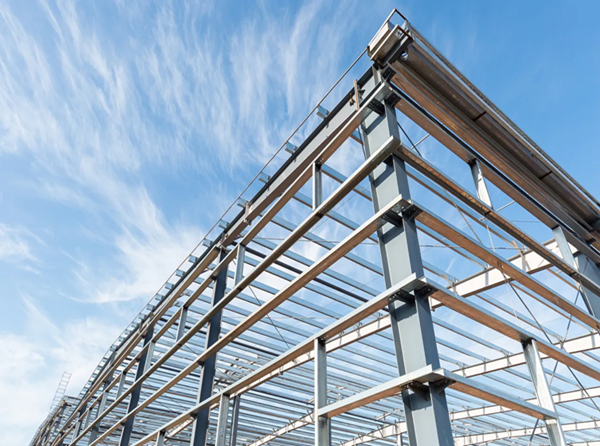Enhancing fire protection in metal construction
Epoxy intumescent coatings protect steel in industrial settings, offering up to 4 hours of fire resistance, corrosion protection, and design flexibility for modern, high-performance construction.
Published 13 January 2025

According to the National Fire Protection Association (NFPA), fire departments across the U.S. respond to nearly 38,000 fires annually in industrial and manufacturing facilities. These fires cause more than $1.2 billion in property damage each year, highlighting the critical need to protect metal and steel structures. Epoxy intumescent coating offers a powerful solution to insulate structural steel from heat and fire to protect people and assets.
The role of intumescent fire resistive materials in fire protection
To mitigate these fire risks, epoxy intumescent has emerged as an essential solution for metal structure protection. When exposed to extreme heat, the coating expands to form a thick, foam-like layer that slows heat transfer to the steel. This delay allows for valuable evacuation and emergency response time, ultimately preventing catastrophic structural failure. This solution offers effective fire protection for industrial and manufacturing facilities and maintains the aesthetic integrity of exposed steel. The thin-film coating addresses the design challenges posed by traditional bulky fire protection systems to ensure safety without adding excessive weight or compromising visual appeal.
Designed for infrastructure segments but optimized for advanced manufacturing facilities, including semiconductor plants, data centers, and electric vehicle battery factories, this coating provides a ductile yet robust solution that provides up to four hours of fire protection.
The coating is optimized for off-site application, allowing for a dry film thickness of up to 3,500 microns of dry-film thickness in a single coat, curing quickly for next-day handling. It is ideal for stick steel or modular construction projects meeting aggressive schedule demands. The unique flexible epoxy technology offers excellent durability and edge retention, minimizing the risk of stress fatigue in the film during handling and transportation. It also provides International Organization for Standardization (ISO) 12944 C5 corrosion resistance without a topcoat.
Why fire protection matters in modern construction
Fire protection ensures the safety of building occupants and first responders and the structural integrity of steel buildings. Intumescent coatings offer reliable fire resistance while guaranteeing projects meet national and international fire and corrosion standards. These coatings also protect against corrosion, ensuring the long-term durability of the structure.
Intumescent fire-resistive materials offer protection and serve as an alternative to traditional methods. In modular and off-site construction, the coating is applied before transporting steel components. This ensures a consistent environment to speed up scheduling and reduce common issues in traditional field applications, such as sequencing or trade stacking. This process also allows the construction teams to maintain both protection and design goals without compromising one for the other.
Case study: Fire protection for a biotechnology facility in Rwanda
A leading German biotechnology company known for developing active immunotherapies partnered with one of Portugal’s largest steel constructors to address the need for robust fire protection at their new manufacturing facility in Kigali, Rwanda. The project faced significant logistical and environmental challenges, requiring a fire-protection solution that could meet a 90-minute standard fire scenario and withstand transportation from Portugal to Rwanda.
The team applied epoxy intumescent coating, recognized by ISO standards and known for its flexibility and high performance in C3 and C5 corrosivity environments. This coating was vital in meeting the project’s demanding needs, allowing for efficient application and damage-free transportation. Not only was the project completed on schedule in four months with 60,000 kgs (132,277 lbs) of the coating efficiently applied, but the durability of the coating also meant the structures could be transported without damage, arriving in Rwanda ready for quick construction and assembly. This case is a prime example of how coatings can enhance the integrity and protection of large steel structures.
Building the future
The increasing complexity of modern building designs, paired with the demand for protection and aesthetic appeal, makes it essential for design teams and contractors to choose specialized fire protection technologies. Intumescent fire-resistive materials ensure compliance with stringent fire protection standards, streamline the construction process, and enhance operational efficiency.
By investing in the right fire protection solutions, metal construction leaders can protect lives, safeguard valuable assets, and preserve structural integrity in even the most demanding environments. The specialized coating represents the future of metal construction, offering a seamless balance between form and function.
Stuart Bradbury is PPG’s business development manager of fire protection, protective, and marine coatings. He has over 20 years of experience designing, managing, testing, and implementing mitigation measures for fire, explosion, and cryogenic spill hazards.
Originally published in Metal Construction News.
